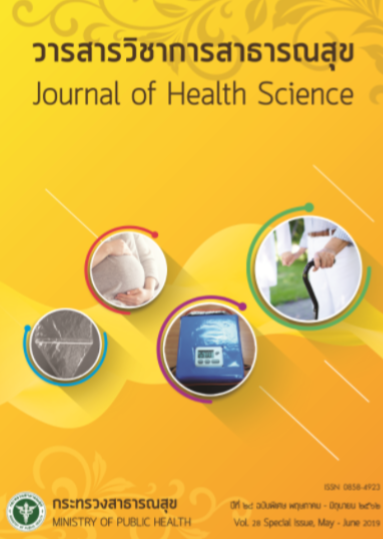Desirable Scenario of Primary Care Units along Thailand – Malaysia Border in the Next Decade
Keywords:
desirable scenario, primary care units, Thailand–Malaysia borderAbstract
This research was aimed to study the context of health system between Thailand and Malaysia and determine the desirable scenario of primary care units along Thailand – Malaysia border in the next decade (2018 – 2027). Mixed methods, both quantitative and qualitative research, were used in this study. The qualitative research was conducted by applying ethnographic Delphi futures research (EDFR). The informants were 24 participants including 15 Thai and 9 Malaysian experts at the administrative, operative and community levels. The results revealed that family doctors played a significant role in primary care units at sub-district levels in Malaysia, namely the health clinic. There were altogether 919 health clinics with doctors for a population around 33 million in Malaysia. Meanwhile, Thailand had 9,863 sub-district health promoting hospitals (without doctor); and they were organized to form clusters with family doctor team, of which 806 primary care clusters were already operated, with the aim to cover 6,500 clusters for the entire 67 million populations by the year 2026. Based on the analysis, the desirable scenario of primary care units along the border area of Thailand – Malaysia in the next decade would consist of 11 aspects containing 50 items, or so called the “INSPIRATION Model”. All the 11 aspects were as follow: (1) Information [I], (2) Network [N], (3) Service [S], (4) P consists of personnel or health workforce [P1] and people participation [P2], (5) Innovation [I], (6) Relationship management [R], (7) Access to drugs and equipment [A], (8) T composed of Transfer/referrals system [T1] and Team building [T2], ( 9) Integration [I], (10) Organization governance [O], and (11) National and international policy [N]. As the last procedure of connoisseurship, a consensus was made by the experts to agree upon the outcomes, and valuable suggestions had let to the tracing of 2 important bilateral agreements signed in the years 1997 and 2007. They were not referred to in the 15 Border Health Meetings during 2002-2018. Therefore, the policy recommendations were to review the agreement and identify appropriate ways for the current situation and joint implementation in order to promote health of the people, families and communities through self-health management needed for better health in the future.
Downloads
Downloads
Published
How to Cite
Issue
Section
License
Copyright (c) 2019 Journal of Health Science - วารสารวิชาการสาธารณสุข

This work is licensed under a Creative Commons Attribution-NonCommercial-NoDerivatives 4.0 International License.







